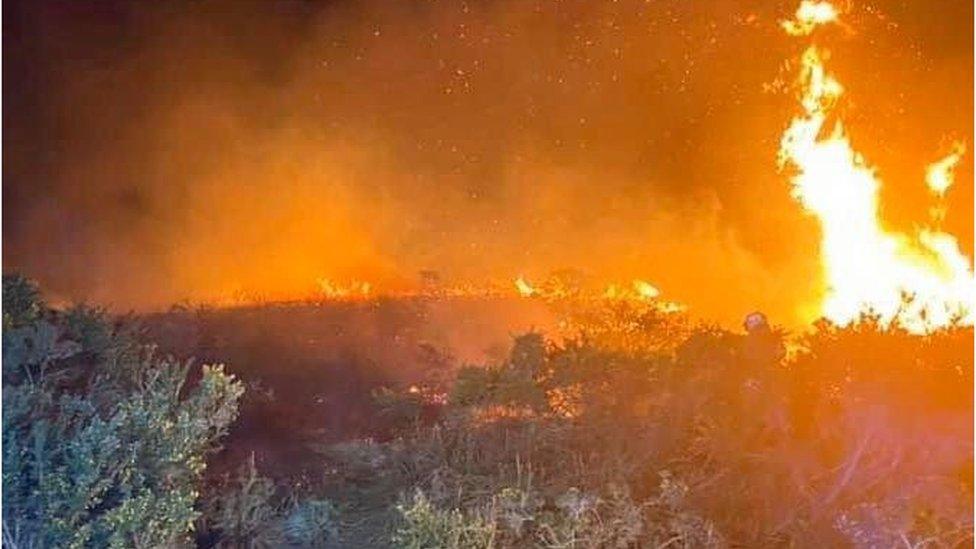Sand lizards return to heath after fire
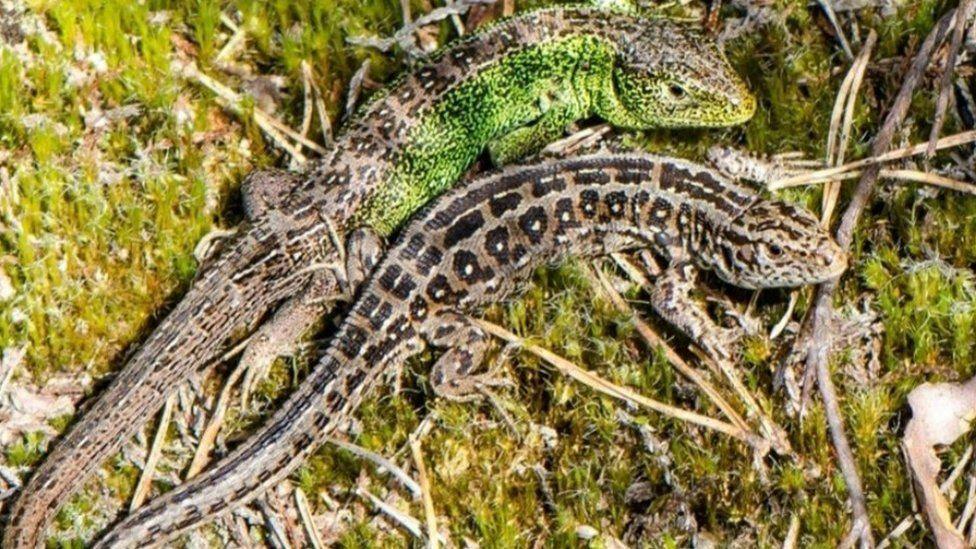
The lizards are being released in an attempt to restore the population to a self-sustaining level
At a glance
Rare sand lizards have been released on Winfrith Heath
More than 150 are set to be freed in an attempt to restore the species
The reptiles perished in a wildfire at the nature reserve in 2020
They have not been seen at the heathland since the fire
- Published
Sand lizards have been released at a nature reserve in an attempt to bring back the reptiles after a major fire.
The fire on Winfrith Heath destroyed an area the equivalent to the size of two football pitches in April 2020.
Dorset Wildlife Trust (DWT) said the rare sand lizards had not been seen on the heath since.
Two dozen have been released with a further 150 of the reptiles, which have been bred in captivity, set to be released over the coming months.
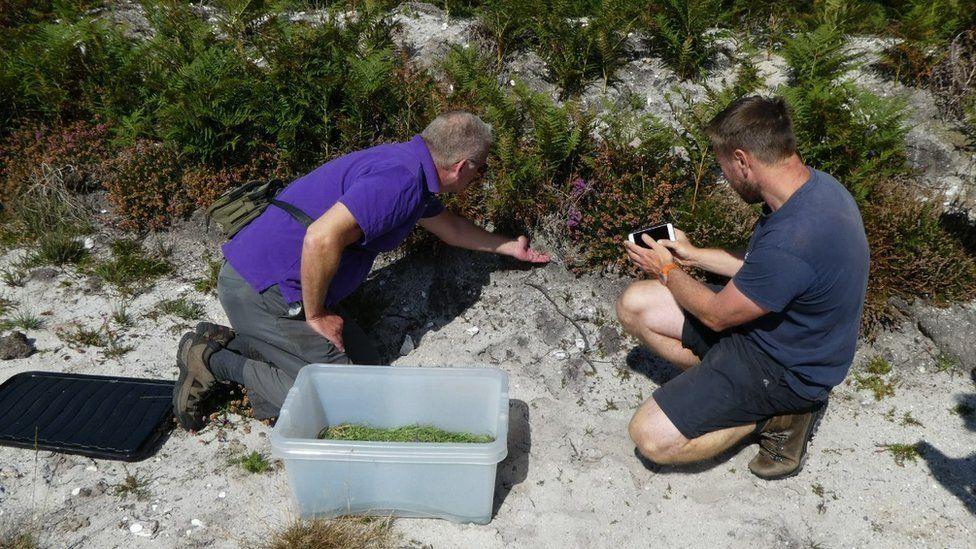
Further releases are planned to enable a thriving population at the heath
DWT said work had been carried out on the heath ahead of releasing the lizards to create and manage the bare ground habitat.
It said the work was essential for successful egg development and the reintroduction of the sand lizards.
The trust's ecologist, Steve Masters, said: "Our nature reserves are at the heart of our ambition to recover some of our rarest UK species and habitats.
"We have monitored the site closely to assess the condition of the habitat, before deciding that reintroduction is the right thing to do.
"Sand lizards are an iconic species of our heathland ecosystems, and it is amazing to be part of their return."
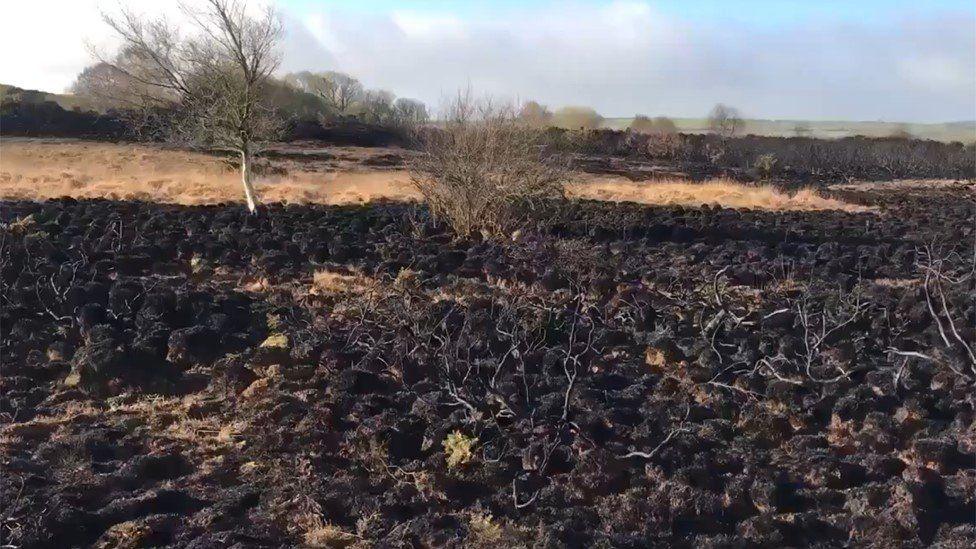
The aftermath of the fire at Winfrith Heath
The wildlife charity said the young lizards had been bred at captive breeding centres with outdoor enclosures that mimic the sand lizard's natural environment.
At its height, 45 firefighters dealt with the blaze on Winfrith Heath. It is believed to have started following a bonfire.
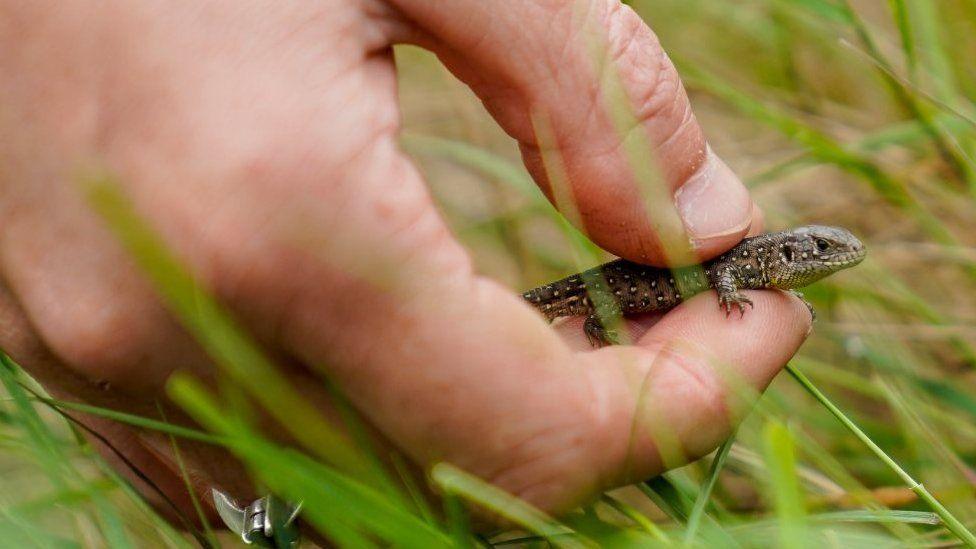
The rare sand lizards have not been seen on the heath since the fire in 2020
Sand lizard facts:
They live on protected heathland sites in Surrey, Dorset, Hampshire and in the protected Merseyside dunes
They grow up to 20cm (7.8in) long and weigh about 15g (0.5oz)
Both sexes have brown patterns down their backs with two stripes
Their diet is mainly insects, spiders and grasshoppers.
Source: Amphibian and Reptile Conservation
Follow BBC South on Facebook, external, X, external, or Instagram, external. Send your story ideas to south.newsonline@bbc.co.uk, external.
Related topics
- Published6 April 2020
